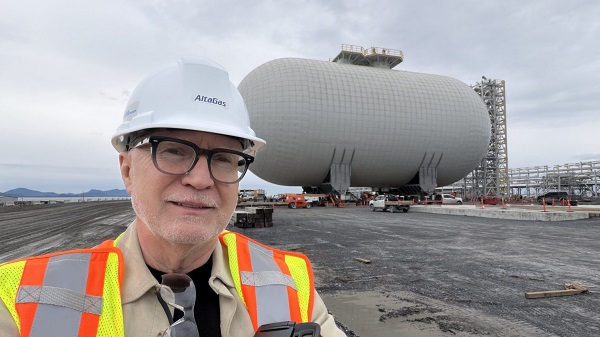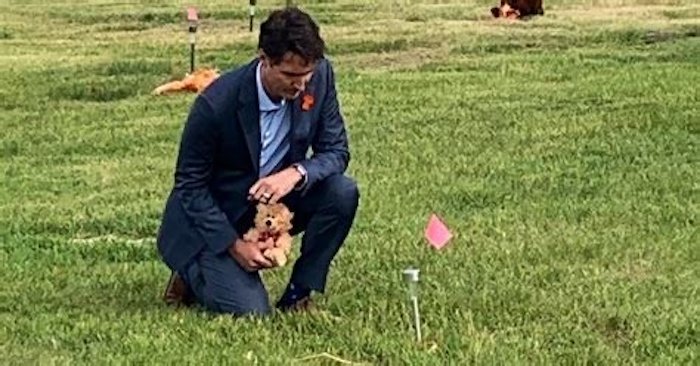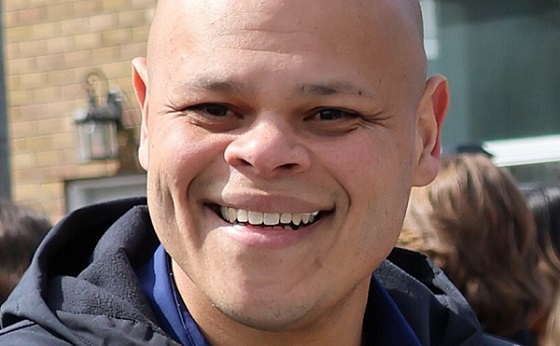Alberta
ONE RELATIONSHIP AT A TIME: THE PATH TO PROJECT SUCCESS

ONE RELATIONSHIP AT A TIME: THE PATH TO PROJECT SUCCESS

Infrastructure development is full of risks, which are managed in a number of ways. Risk management might sound cold and impersonal, but it has the potential to incent real human connections and build genuine relationships. Key risks may have leading practice on how best to mitigate, transfer, ignore or hold those risks, but when it comes to energy development across Canada, meaningful consultation and accommodation is non- negotiable. As most are well aware at this point, the Crown must consult and accommodate where Aboriginal or Treaty rights are impacted. Far from being a mandatory ‘checkbox’ in the process of project development, the undertaking of engagement and relationship-building holds the potential for mutual benefits for both the project and the impacted First Nations, Inuit, or Métis community.
Genuine relationship-building is a solid foundation for partnership on energy projects, to the benefit of both parties. This partnership can take the form of Impact Benefit Agreements (IBA) Mutual Benefit Agreements (MBA) or equity participation arrangements, among others. Both IBAs and equity arrangements have the potential to grow economic and social prosperity, but determining which approach is the best fit will be influenced by the priorities and capacity of both the developer and the Indigenous community.
In both these common approaches there are similar objectives:
- Compensation for and mitigation of potential impact
- Influence or control over project design and development
- Securing benefits for the community
- Securing social license
- Working towards consent and support of the project
- Reduced risk of opposition or disruption
- Improved financing as a result of managed risks
Both also reflect an underlying premise that it is no longer acceptable to develop resources or energy infrastructure in a manner where impacts fall to one party, and benefits to the other.
When comparing and contrasting IBAs and equity arrangements, some key considerations are the degree of potential impact, the capacity and interest of the community in the project’s development and management, the project’s term, risk tolerance of either party, and financing and funding opportunities.
Impact Benefit Agreements between a project developer and impacted Indigenous community formalize project benefits sharing. Often, these IBAs will provide some employment, training, and contracting opportunities, but the economic benefits will often be tied to the project’s degree of impact to traditional lands and lifestyle (e.g., land impacts, hunting and gathering impacts, etc.). Regardless of how well the project is performing, the IBAs will guarantee a steady revenue stream to the Indigenous community. This can be a safe bet for risk adverse councils but holds the potential for serious revenue inequity in the case where the project is successful and very profitable.
Pivoting from partnership to ownership, equity participation agreements clearly scale the revenue sharing between the project developer and community as the project success and profitability increases. If the energy project does well, the First Nation, Inuit, or Métis equity partner is also going to do well and see greater revenues. The inverse is also true. In these equity arrangements, which are becoming more prevalent in the eastern provinces, the Indigenous partner has a greater say in project operations, as they are a shareholder. It also arguably provides more security to the developers, as the Indigenous partner is a proponent of the project, and no longer a potential opponent. Both partners would look to maximize the economic benefits of the project, while minimizing the adverse economic, environmental and social consequences flowing from the project. Without focusing too much on the direct revenue arrangement, equity arrangements will often also include guaranteed or preferential opportunities for contracting, procurement, employment and training.
To be clear, in either an IBA or equity arrangement model, the duty to consult and accommodate is neither negated nor automatically fulfilled. But the relationship between developer and community becomes formalized and clearer, adding transparency and certainty to an otherwise risk-filled process.
Managing project risk is a mandatory part of project development. But the means of managing risk holds so much potential for empowerment, leadership, and benefit. Project success and economic development are not an end in themselves, but rather a means to an end – the end being healthier and more prosperous First Nations, Inuit, and Métis communities, and Canada as a whole. All the while moving the dial on reconciliation through real connections, business developments, and cultural education – one relationship at a time.
Robyn Budd was a 2019 member of the Energy Council of Canada’s Young Energy Professionals program and was a Manager in KPMG’s Global Infrastructure Advisory practice, based in the unceded territory of the Musqueam, Squamish, and Tsleil-Waututh nations (Vancouver). She was also the Leader of KPMG’s National Indigenous Network.
Zachary McCue is Founder of The Waabgaag Group, with expertise in renewable, infrastructure, and resource development, specializing in equity participation and impact benefit agreements. He is a proud member of Curve Lake First Nation and is based in Ontario.
Thanks to Todayville for helping us bring our members’ stories of collaboration and innovation to the public.
Click to read a foreward from JP Gladu, Chief Development and Relations Officer, Steel River Group; Former President and CEO, Canadian Council for Aboriginal Business.

JP Gladu, Chief Development and Relations Officer, Steel River Group; Former President & CEO, Canadian Council for Aboriginal Business
Click to read comments about this series from Jacob Irving, President of the Energy Council of Canada.

Jacob Irving, President of Energy Council of Canada
The Canadian Energy Compendium is an annual initiative by the Energy Council of Canada to provide an opportunity for cross-sectoral collaboration and discussion on current topics in Canada’s energy sector. The 2020 Canadian Energy Compendium: Innovations in Energy Efficiency is due to be released November 2020.
Click to read more stories from this series.
INDIGENOUS CONSULTATION AND ENGAGEMENT AT CANADA’S ENERGY AND UTILITY REGULATORS
Alberta
Here’s why city hall should save ‘blanket rezoning’ in Calgary

From the Fraser Institute
By Tegan Hill and Austin Thompson
According to Calgarians for Thoughtful Growth (CFTG)—an organization advocating against “blanket rezoning”— housing would be more affordable if the mayor and council restricted what homes can be built in Calgary and where. But that gets the economics backwards.
Blanket rezoning—a 2024 policy that allowed homebuilders to construct duplexes, townhomes and fourplexes in most neighbourhoods—allowed more homebuilding, giving Calgarians more choice, and put downward pressure on prices. Mayor Farkas and several councillors campaigned on repealing blanket rezoning and on December 15 council will debate a motion that could start that process. As Calgarians debate the city’s housing rules, residents should understand the trade-offs involved.
When CFTG claims that blanket rezoning does “nothing” for affordability, it ignores a large body of economic research showing the opposite.
New homes are only built when they can be sold to willing homebuyers for a profit. Restrictions that limit the range of styles and locations for new homes, or that lock denser housing behind a long, costly and uncertain municipal approval process, inevitably eliminate many of these opportunities. That means fewer new homes are built, which worsens housing scarcity and pushes up prices. This intuitive story is backed up by study after study. An analysis by Canada’s federal housing agency put it simply: “higher residential land use regulation seems to be associated with lower housing affordability.”
CFTG also claims that blanket rezoning merely encourages “speculation” (i.e. buying to sell in the short-term for profit) by investors. Any profitable housing market may invite some speculative activity. But homebuilders and investors can only survive financially if they make homes that families are willing to buy or rent. The many Calgary families who bought or rented a new home enabled by blanket rezoning did so because they felt it was their best available option given its price, amenities and location—not because they were pawns in some speculative game. Calgarians benefit when they are free to choose the type of home and neighbourhood that best suits their family, rather than being constrained by the political whims of city hall.
And CFTG’s claim that blanket rezoning harms municipal finances also warrants scrutiny. More specifically, CFTG suggests that developers do not pay for infrastructure upgrades in established neighbourhoods, but this is simply incorrect. The City of Calgary charges an “Established Area Levy” to cover the cost of water and wastewater upgrades spurred by redevelopment projects—raising $16.5 million in 2024 alone. Builders in the downtown area must pay the “Centre City Levy,” which funds several local services (and generated $2.5 million in 2024).
It’s true that municipal fees on homes in new communities are generally higher, but that reflects the reality that new communities require far more new pipes, roads and facilities than established neighbourhoods.
Redeveloping established areas of the city means more residents can make use of streets, transit and other city services already in place, which is often the most cost-effective way for a city to grow. The City of Calgary’s own analysis finds that redevelopment in established neighbourhoods saves billions of taxpayer dollars on capital and operating costs for city services compared to an alternative scenario where homebuilding is concentrated in new suburban communities.
An honest debate about blanket rezoning ought to acknowledge the advantages this system has in promoting housing choice, housing affordability and the sustainability of municipal finances.
Clearly, many Calgarians felt blanket rezoning was undesirable when they voted for mayoral and council candidates who promised to change Calgary’s zoning rules. However, Calgarians also voted for a mayor who promised that more homes would be built faster, and at affordable prices—something that will be harder to achieve if city hall imposes tighter restrictions on where and what types of homes can be built. This unavoidable tension should be at the heart of the debate.
CFTG is promoting a comforting fairy tale where Calgary can tighten restrictions on homebuilding without limiting supply or driving up prices. In reality, no zoning regime delivers everything at once—greater neighbourhood control inevitably comes at the expense of housing choice and affordability. Calgarians—including the mayor and council—need a clear understanding of the trade-offs.
Alberta
The case for expanding Canada’s energy exports

From the Canadian Energy Centre
For Canada, the path to a stronger economy — and stronger global influence — runs through energy.
That’s the view of David Detomasi, a professor at the Smith School of Business at Queen’s University.
Detomasi, author of Profits and Power: Navigating the Politics and Geopolitics of Oil, argues that there is a moral case for developing Canada’s energy, both for Canadians and the world.
CEC: What does being an energy superpower mean to you?
DD: It means Canada is strong enough to affect the system as a whole by its choices.
There is something really valuable about Canada’s — and Alberta’s — way of producing carbon energy that goes beyond just the monetary rewards.
CEC: You talk about the moral case for developing Canada’s energy. What do you mean?
DD: I think the default assumption in public rhetoric is that the environmental movement is the only voice speaking for the moral betterment of the world. That needs to be challenged.
That public rhetoric is that the act of cultivating a powerful, effective economic engine is somehow wrong or bad, and that efforts to create wealth are somehow morally tainted.
I think that’s dead wrong. Economic growth is morally good, and we should foster it.
Economic growth generates money, and you can’t do anything you want to do in social expenditures without that engine.
Economic growth is critical to doing all the other things we want to do as Canadians, like having a publicly funded health care system or providing transfer payments to less well-off provinces.
Over the last 10 years, many people in Canada came to equate moral leadership with getting off of oil and gas as quickly as possible. I think that is a mistake, and far too narrow.
Instead, I think moral leadership means you play that game, you play it well, and you do it in our interest, in the Canadian way.
We need a solid base of economic prosperity in this country first, and then we can help others.
CEC: Why is it important to expand Canada’s energy trade?
DD: Canada is, and has always been, a trading nation, because we’ve got a lot of geography and not that many people.
If we don’t trade what we have with the outside world, we aren’t going to be able to develop economically, because we don’t have the internal size and capacity.
Historically, most of that trade has been with the United States. Geography and history mean it will always be our primary trade partner.
But the United States clearly can be an unreliable partner. Free and open trade matters more to Canada than it does to the U.S. Indeed, a big chunk of the American people is skeptical of participating in a global trading system.
As the United States perhaps withdraws from the international trading and investment system, there’s room for Canada to reinforce it in places where we can use our resource advantages to build new, stronger relationships.
One of these is Europe, which still imports a lot of gas. We can also build positive relationships with the enormous emerging markets of China and India, both of whom want and will need enormous supplies of energy for many decades.
I would like to be able to offer partners the alternative option of buying Canadian energy so that they are less reliant on, say, Iranian or Russian energy.
Canada can also maybe eventually help the two billion people in the world currently without energy access.
CEC: What benefits could Canadians gain by becoming an energy superpower?
DD: The first and primary responsibility of our federal government is to look after Canada. At the end of the day, the goal is to improve Canada’s welfare and enhance its sovereignty.
More carbon energy development helps Canada. We have massive debt, an investment crisis and productivity problems that we’ve been talking about forever. Economic and job growth are weak.
Solving these will require profitable and productive industries. We don’t have so many economic strengths in this country that we can voluntarily ignore or constrain one of our biggest industries.
The economic benefits pay for things that make you stronger as a country.
They make you more resilient on the social welfare front and make increasing defence expenditures, which we sorely need, more affordable. It allows us to manage the debt that we’re running up, and supports deals for Canada’s Indigenous peoples.
CEC: Are there specific projects that you advocate for to make Canada an energy superpower?
DD: Canada’s energy needs egress, and getting it out to places other than the United States. That means more transport and port facilities to Canada’s coasts.
We also need domestic energy transport networks. People don’t know this, but a big chunk of Ontario’s oil supply runs through Michigan, posing a latent security risk to Ontario’s energy security.
We need to change the perception that pipelines are evil. There’s a spiderweb of them across the globe, and more are being built.
Building pipelines here, with Canadian technology and know-how, builds our competitiveness and enhances our sovereignty.
Economic growth enhances sovereignty and provides the resources to do other things. We should applaud and encourage it, and the carbon energy sector can lead the way.
-

 National1 day ago
National1 day agoCanada’s free speech record is cracking under pressure
-

 Energy18 hours ago
Energy18 hours agoTanker ban politics leading to a reckoning for B.C.
-

 Energy18 hours ago
Energy18 hours agoMeet REEF — the massive new export engine Canadians have never heard of
-

 Business1 day ago
Business1 day agoTaxpayers Federation calls on politicians to reject funding for new Ottawa Senators arena
-

 Censorship Industrial Complex1 day ago
Censorship Industrial Complex1 day agoOttawa’s New Hate Law Goes Too Far
-

 Fraser Institute19 hours ago
Fraser Institute19 hours agoClaims about ‘unmarked graves’ don’t withstand scrutiny
-

 Business18 hours ago
Business18 hours agoToo nice to fight, Canada’s vulnerability in the age of authoritarian coercion
-

 Business1 day ago
Business1 day agoAlbertans give most on average but Canadian generosity hits lowest point in 20 years






